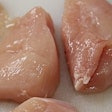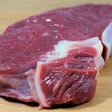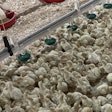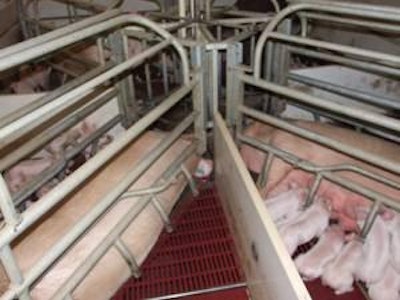
Italian pig producers are caught in the same pincer movement as many of their European counterparts—low pork prices and high feed costs.
Therefore, the mood at the recent Suinicola Italian pig fair, April 14-16, in Reggio Emilia was sombre, and the plates of prosciutto that are normally prominent on company stands were noticeably absent.
EU partial sow stall ban
With the European Union's 2013 partial sow stall ban approaching rapidly—about 19 months away— pig producers don’t have much time left to submit plans, get planning permission and build new dry sow facilities.
Northern European pig producers are well advanced with the changes, but it’s generally recognised that 75-80% of Italian pig farmers still have to move to loose housing systems.
A number of sow housing systems were on display at Reggio Emilia. Most of them are based on well-known designs and promoted by international companies or their Italian subsidiaries.
A Spanish company (Eurogan SL) displayed its version of an ESF system.
The systems are high-tech and learning to use the technology can be difficult, so they are not an option for some pig producers.
Biofuel raising feed prices
Traditionally Italian pig producers enjoyed a plentiful supply of whey from the country’s cheese industry for pig feed via pipeline systems. But, today whey is in demand as a feedstock for biofuels.
Maize traditionally has been used in animal feeds; however, Italian pig producers are experiencing what their US counterparts are dealing with high animal feed prices because demand for biofuel feedstocks is pushing up grain prices.
Wet feed study
Co-products give the best savings for feed costs, but feeding pigs, a conventional diet with water, as “soup,” has generally given better performance than dry diets.
What puts pig producers off is the high cost of investing in wet feed equipment, especially when money is tight.
Given the current trend to bigger litters, though, wet feeding has to be given serious consideration, as it’s well known sows eat more of a wet feed. Another key factor is that large litters can pull sows down when feed nutrient intake is less than the nutrients going out as milk, to satisfy hungry piglets, which can then lead to serious problems getting sows back in-pig again.
CIMA srl, an Italian wet feeding equipment company based in Correggio, sponsored a pig wet feed study with Bologna University Veterinary Medicine Faculty. The study found that wet-fed sows consumed 4.68kg of feed / day through lactation versus 3.71kg / day for dry fed sows, plus very importantly dry fed sows lost more weight (32.28kg) than wet fed sows (19.5kg) P< 0.05. The dry fed sows also lost more fat cover in terms of P2 fat depth.
Wet feed equipment
CIMA designed and manufactured a layout for farrowing sows, where four farrowing crates are positioned at 90-degree angles, with a central circular feed trough, which all four sows share. Feed is delivered through a down-pipe and each sow can see her three neighbours to help increase feed intake, because as soon as one sow starts to eat the rest will follow suit.
During weaning, sows are moved; farrowing crates are disassembled to become a weaner pen for the four litters. The piglets mix easier, because they have been in close contact since farrowing. Because they are not moved, the piglets don’t suffer a post-weaning check in growth, as they might if moved from a farrowing house to a separate weaner/ flat deck facility in another part of the farm.
Case study
An 1,800-sow family-run farrow-to-finish farm near Reggio Emilia, is using CIMA’s system and its pigs are being wet fed at all stages of life. The pigs are finished at 165kg liveweight and then sold through a co-op for Parma ham.
Several large silos are used to store wholecrop maize, which is mixed with straights and water and fed as soup. Litters average 11.2 born alive and piglets weigh 7kg at 28 days. Lactating sows are housed in groups of four on fully slatted floors, with the weaners remaining in the same pen, which at this stage holds four litters of weaned piglets.
Until recently, the farm used to sell 50% of the pigs at 50kg, for finishing elsewhere. However, the finishing accommodation was expanded to allow all the pigs to be finished, which is a more profitable option. The finishing houses all have ACNV systems and extraction fans are fitted in the gable ends of each barn. A new concrete tank was built to take slurry from the extra pigs to fertilise the farm‘s maize crop.
Feed prices are always a topical issue and the pig farmer hopes the new system will protect them against rising prices as animal feed ingredients are extensively traded on the world’s stock markets.

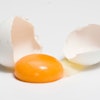


.jpg?auto=format%2Ccompress&fit=crop&h=167&q=70&w=250)



